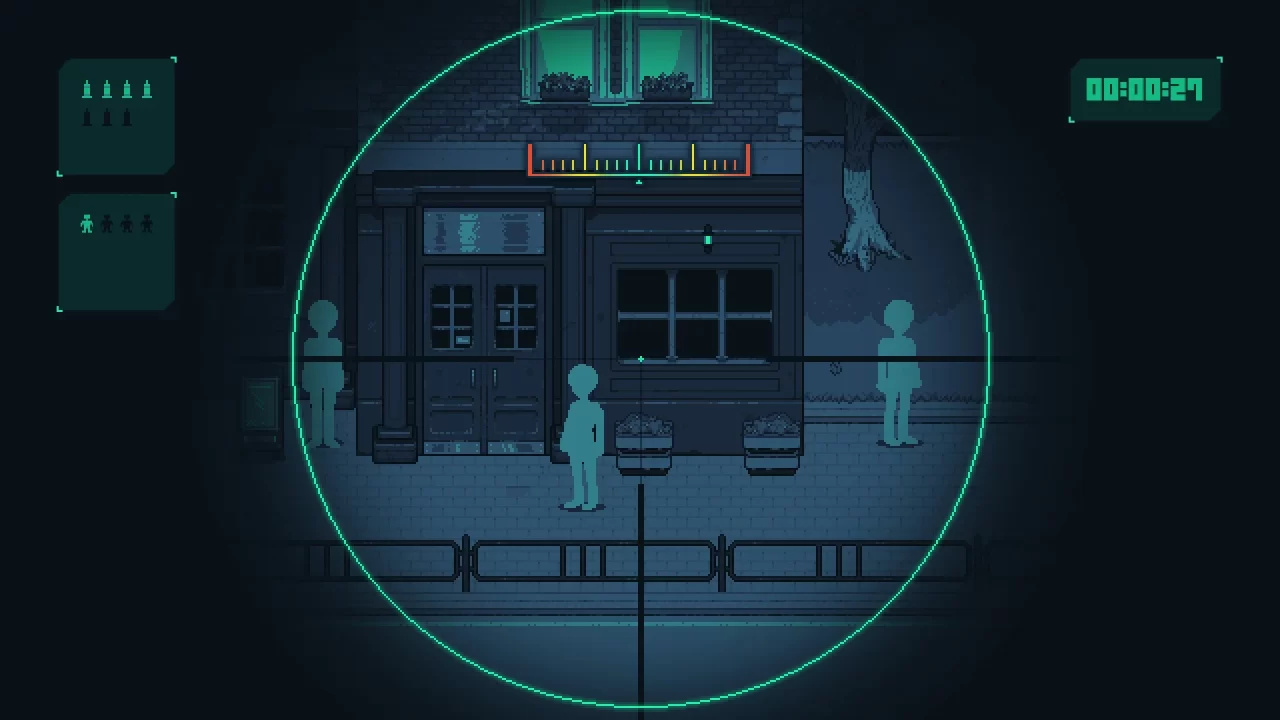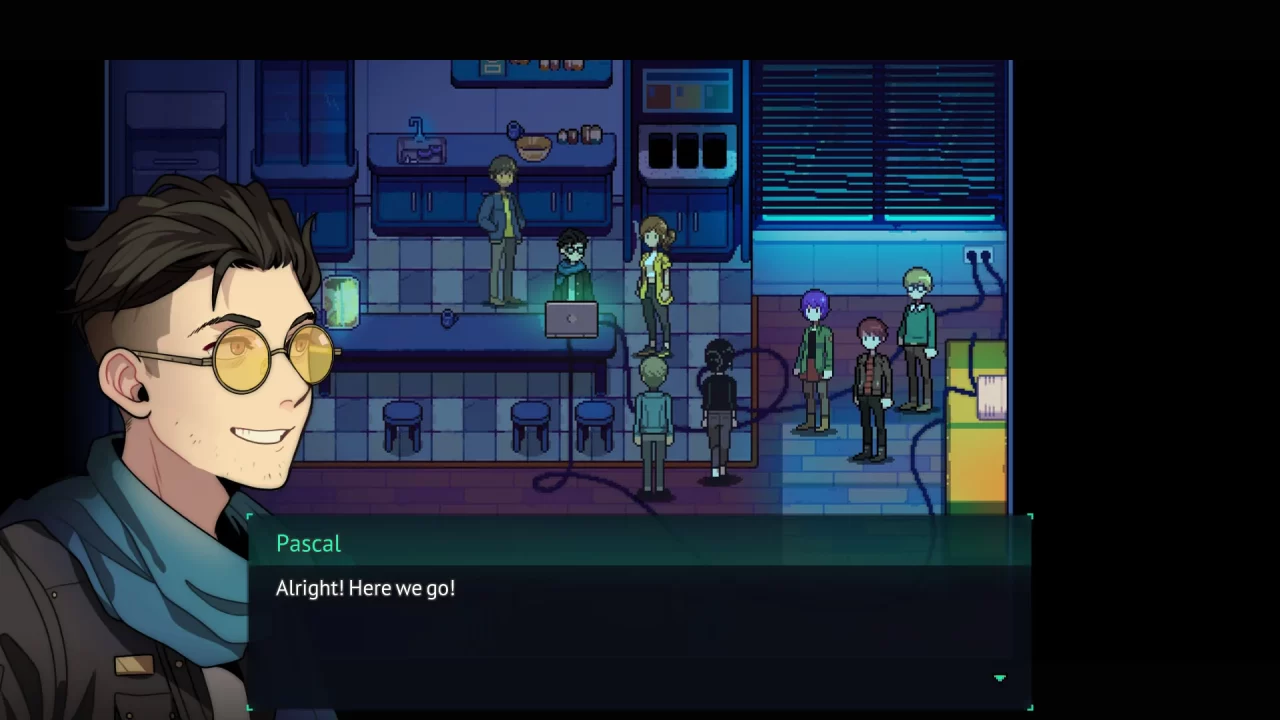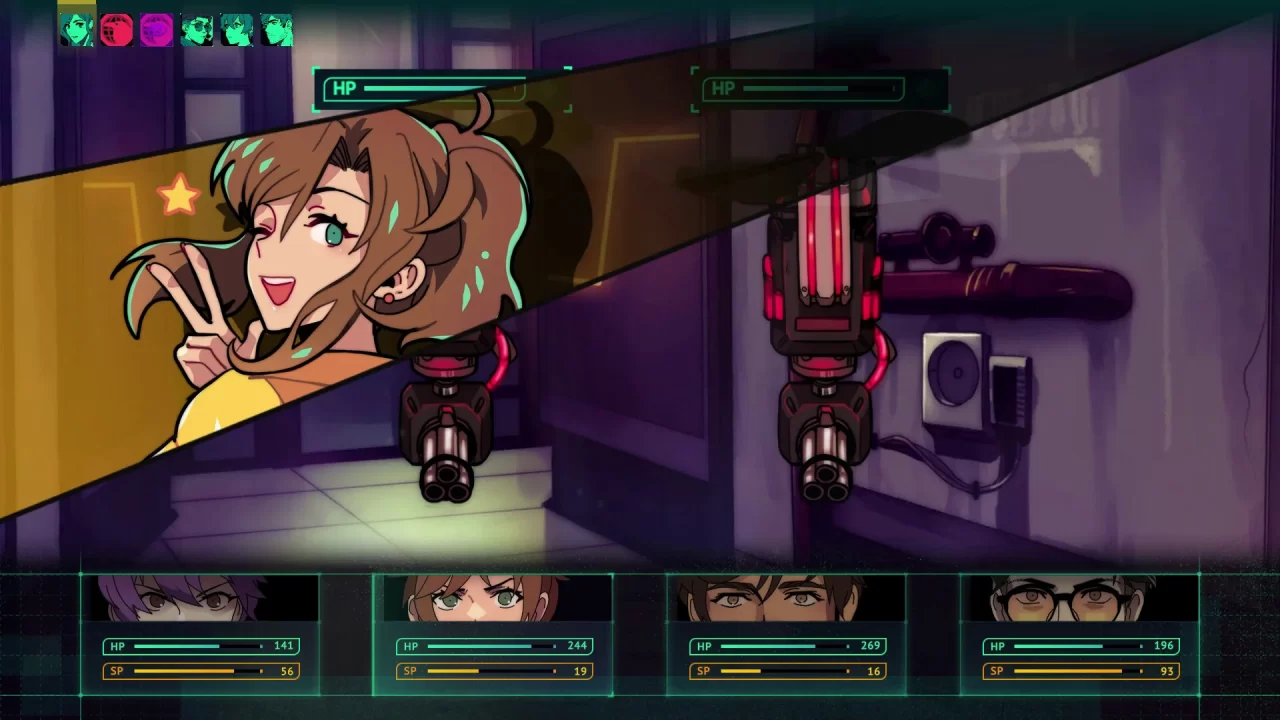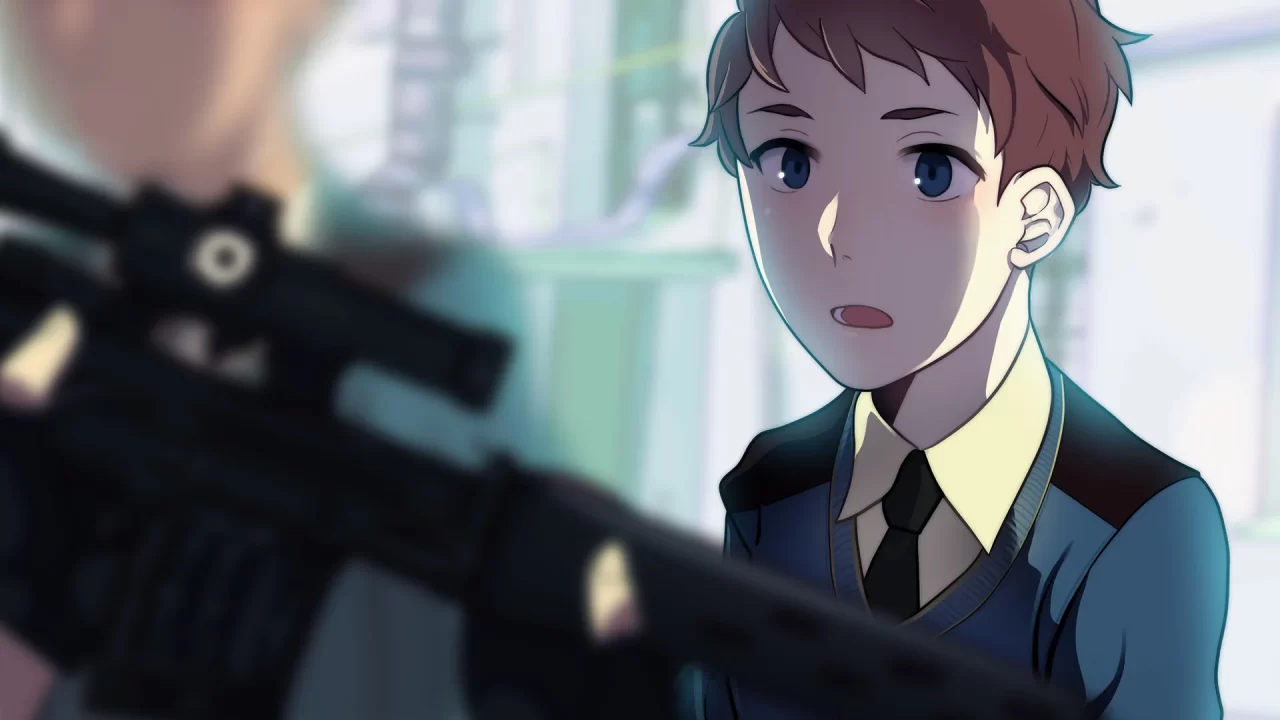Ulysses S. Grant once said, “I have never advocated war except as means of peace, so seek peace, but prepare for war. Because war… War never changes.” This quote came to mind numerous times when playing Long Gone Days, an RPG centered around war and its all-too-real impact on people worldwide. While at times a heavy and sad tale given its subject matter, Long Gone Days is a compelling gaming experience with well-tuned and polished gameplay mechanics.
Long Gone Days‘ story begins with a sniper named Rourke preparing for an assault and reflecting on his life and choices. Rourke was born and raised within The Core, a secret underground military organization with untold influence on the surface world. Despite his rookie status, he’s selected for a covert military operation alongside heavily accomplished Raven Squad operatives. The mission appears to be going relatively well until Rourke makes an upsetting discovery about who his “enemy” targets have been all along. Wracked with dread and guilt, he deserts The Core, is labeled a traitor, and is subsequently marked for death. Rourke and his “brother” medic Adair flee, finding themselves in a surface city soon to be attacked by The Core. In their desperate bid to escape and survive, the two decide to help the people they’d earlier thought were enemies. Eventually, they attempt to stop The Core’s plans and hopefully bring about a lasting peace. But is such a thing even remotely humanly possible?
Long Gone Days is not shy with its commentary regarding warfare and society’s reactions to it. Several of its story beats are reminiscent of actual world events, either ongoing or recent. This type of storytelling can be upsetting and downright triggering to many. Truthfully, I found that I could only play the game in short bursts at a time to keep the intensity from getting overwhelming. In Long Gone Days, soldiers knowingly cut down children to advance their goals. They even wipe out entire villages. People see and hear about unfortunate others fleeing for their lives, only to view them as a resource burden. An extremist political group gains popularity thanks to their anti-immigrant and anti-refugee policies. A criminal element knowingly partakes in human trafficking, blaming the “merchandise” at one point for getting them in trouble by escaping. People who voice discontent about a government coup are taken from their homes, never again to be seen by their loved ones. These narrative threads and more permeate Long Gone Days, leaving a lasting impression because of how deftly they get explored. It isn’t a straightforward plot, but it is altogether necessary.
As reprehensibly horrible as they can be, even the game’s antagonists have a bitterly realistic tinge to them, to the point that you can honestly see how people like them can exist in real life. The supporting cast, meanwhile, is believably written and often quite likable. Long Gone Days‘ narrative realism is fully displayed through its cast. There are horrible people in the world, yes, but many are also decent and either want to do the right thing and don’t know how or, at the very least, don’t want to hurt others. The party members, in particular, reflect this sentiment beautifully: Rourke is soft hearted, just wanting to do better for others; Adair starts reluctantly following along but then begins genuinely wanting to help out; Ivan is a kind-hearted teacher looking out for kids living in an orphanage, wanting to help but not wanting to pick up a gun to do so; Lynn is slow to trust due to her past, but willing to put herself out there if it means helping others; Atiye is an aspiring journalist desiring that the truth be known after she and her friend are personally affected by The Core’s machinations; and, finally, Pascal is a hacker who made a poor job choice but through that decision meets the party, getting a chance for redemption. They’re a genuinely likable bunch, and I love seeing their bonding scenes with one another, especially the ones with Rourke. You want to root for them, especially knowing what they’re up against.
Perhaps the story would ultimately end with a “good triumphs over evil” conclusion in a more traditional RPG. After all, we have a highly determined band of heroes genuinely hoping to make things better. However, Long Gone Days is rooted in reality, tinging the tale’s outcome in bittersweet notes. War and human nature do not make the triumph of good over evil possible. The party fights an uphill battle throughout the game, with things usually not improving despite their best efforts. The narrative sprinkles moments of hope and light throughout, often in small gestures of kindness at bleak points. However, they’re always tempered realistically with the notion that ingrained concepts such as deeply held beliefs like societal prejudices and cultural worldviews are complicated to remove altogether. In that regard, the ending resembles Dragon Age II or a Yasumi Matsuno game narrative. It’s vital to hold onto hope, however fleeting it may be, but that doesn’t necessarily mean the outcome changes. Ultimately, Rourke and the party may or may not succeed in what they set out to do. But there’s always an exhaustive wall to overcome, which makes hope fragile and somewhat dimmed. To say Long Gone Days provides a poignant conclusion is an understatement.
Beyond its incredibly emotive storytelling, Long Gone Days plays like a traditional RPG. There’s an occasional sniping mechanic during battles where Rourke must target and shoot several enemies with limited ammo. However, that isn’t the main meat of combat, save for the beginning portions of the game and a very intense “final snipe” segment towards the end. Instead, you control the party of up to four active members against foes in a traditional turn-based system. Weaponry can target different parts of a foe’s body, sometimes offering paralysis depending on which spot you hit. Strategically speaking, you’re more likely to hit the main body of a target, but the more evadable headshot causes far more damage. All party members can attack usually, save for civilian Ivan, who randomly status boosts or heals instead. They also gain special skills that cost SP, ranging from more significant damaging attacks to healing and status-boosting or weakening enemy assaults. You collect items or equipment on the field by opening chests, hitting vending machines, completing side quests, or defeating enemies. These items are often for either battle restorative or offensive measures. The gist of combat in Long Gone Days is easy enough to pick up, and there aren’t different difficulty settings. So long as you keep an eye on your party’s health and target strategically, most fights will pose no threat.
Outside of fights, you walk through town areas or “dungeons,” depending on where you are in the game’s plot. When things are relatively peaceful, and the party gathers intel and plans their next move, you can interact with NPCs and initiate side quests. The menu screen shows side quest progression alongside helpful game notes. Admittedly, there were a few side quests I never figured out how to complete, though I appreciate how varied, story-intensive, and rewarding side quests are. Helping people out with your dialogue choices can increase party morale, which improves later actions the party can take. Dungeons are enemy-filled areas or sometimes just a town at night. In them, you initiate combat by approaching enemies or completing various puzzles, ranging from pushing blocks onto tiles or figuring out the right electricity lines to connect. The puzzles are well-designed and are neither too complex nor too easy. You can only save at specific points, but save spots are frequent enough that that isn’t much of a hindrance. There’s also a constant language barrier at play throughout Long Gone Days. The dialogue will be untranslated until you get someone who can interpret a language for you. You can only pick up on its context through what’s occurring in a given scene. It adds another realistic tinge to the game’s setting, helping to showcase the all-encompassing conflict.
Visually, Long Gone Days is stunning. It’s also an example of stark contrasts. Despite the story’s serious context, the pixelated graphics are very detailed and often shockingly colorful. The anime-inspired character designs are beautiful and quite expressive, and I adore the CG illustrations used during key story points. There’s a life and vibrancy to the world of Long Gone Days, causing its plot to be all the more shocking. I’d say its visual presentation is similar to how disarming the visuals in a recent favorite anime of mine called Mobile Suit Gundam: The Witch from Mercury could be in light of the darker plot lines within the series that deal with the harsh realities of war and its effects on people. Long Gone Days’ UI is also clear, crisp, and eye-catching.
From a sound stance, the OST for Long Gone Days is phenomenal in terms of its scope and emotions. There are some lovely, heartfelt tracks at times and intense, stress-inducing pieces when the party has to fight. Sebastian Marin composed the OST; you can hear some sample tracks here. Sound effects, such as guns loading and reloading, are also used to significant effect. The script is excellently written, with only one or two typos that I even noticed during my roughly twelve-hour playtime.
Long Gone Days is the type of game that can be hard to recommend because the subject material will be too much for some. At the same time, for those its storytelling resonates with, it is a phenomenal RPG with some well-developed gameplay elements. I enjoyed playing the game even though I sometimes had to step away. I genuinely appreciate the all-too-important messages it contains, becoming invested in Rourke’s journey despite myself. Long Gone Days is a genuinely haunting, emotional game that stays with you well after you finish it. I hope many will give it a chance.







